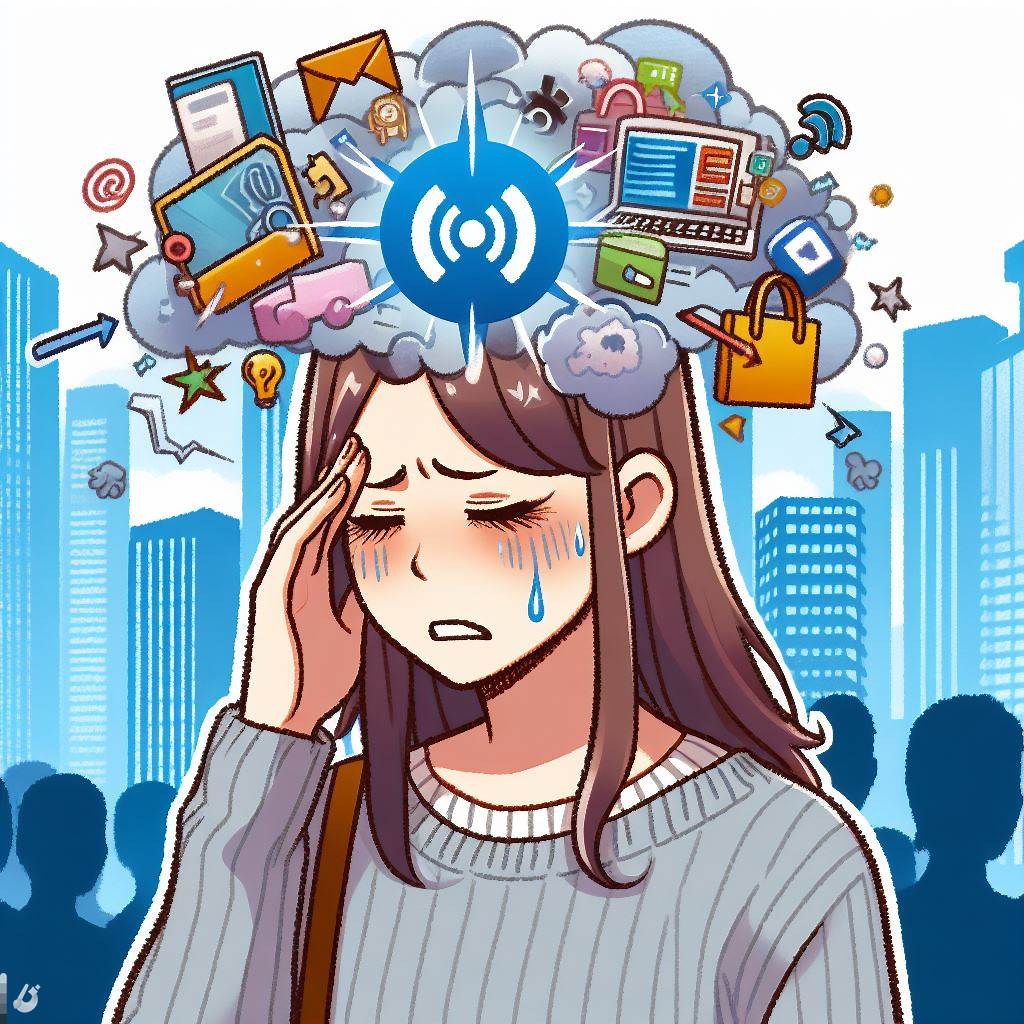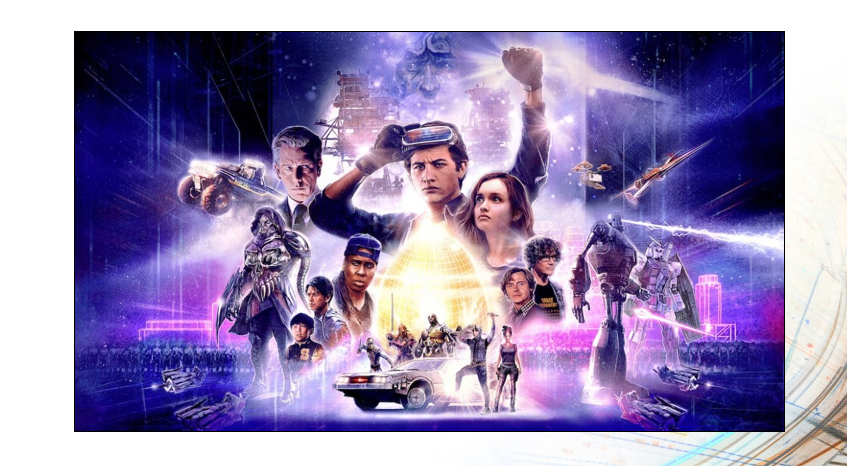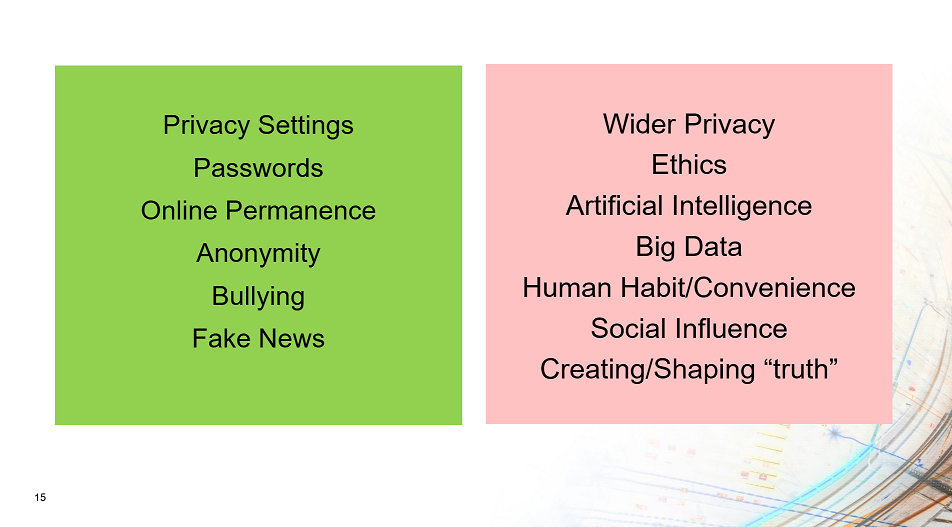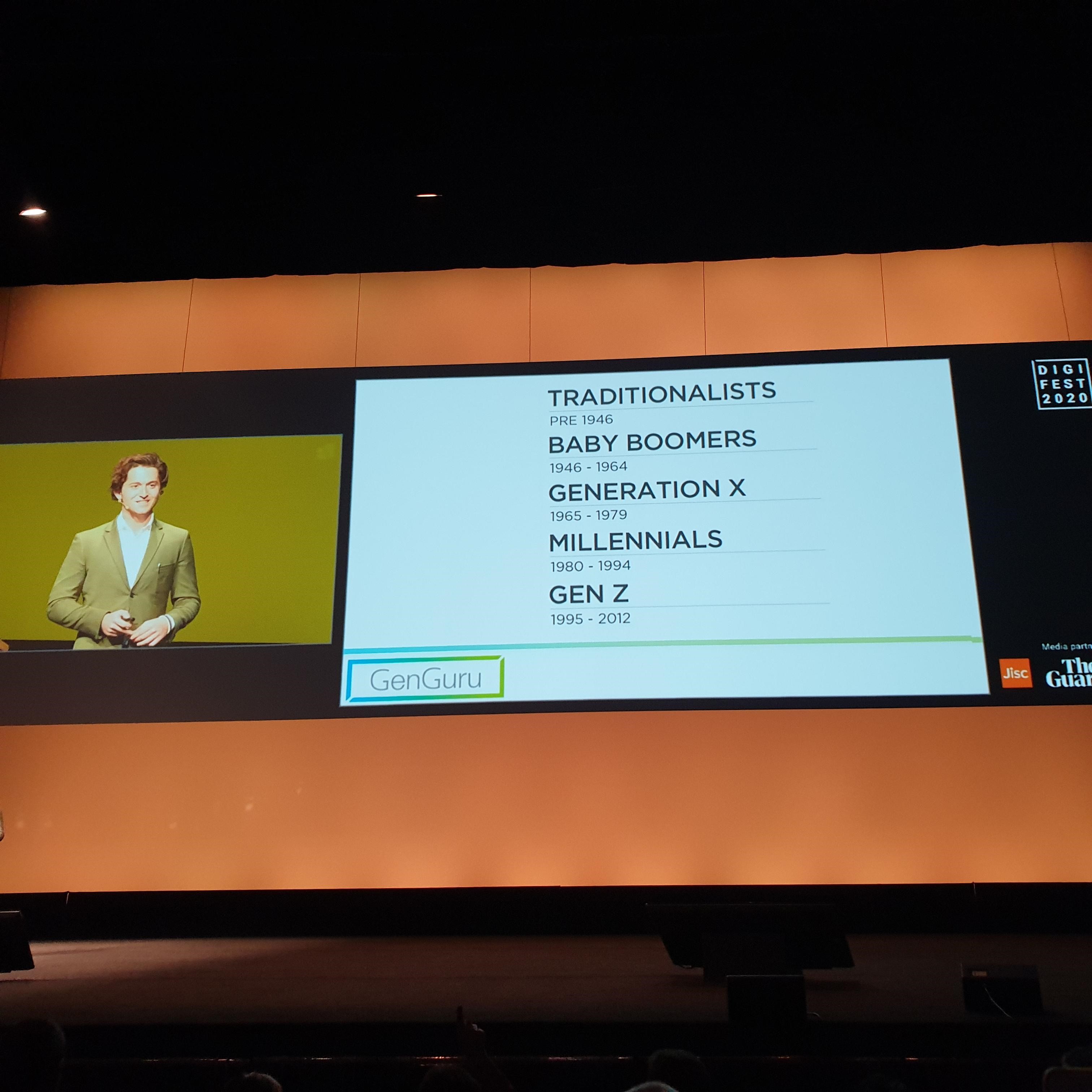
I have followed the work of Ian Phillips for quite a while in particular his discussion of digital headaches. There are definitely a number of things in relation to the use of digital technologies in schools where these result in headaches however there are also non-digital headaches which the use of digital can help towards addressing, plus some other headaches which are much larger and more strategic that they impact on education in general. Here I would like to share a few thoughts on the later of these.
The ”do more” narrative
I have been working in schools for over 25years now, starting my teacher training all the way back in 1994. Over the period I have seen the role change significantly in terms of the things teachers are expected to do beyond their classroom teaching. The change has been gradual over time, so gradual that it is easy to have missed or to underestimate, however the change has been there and is significant in my opinion. Technology has helped in some ways through allowing easy sharing of information, collaboration and record keeping although this doesn’t take away from the fact that there are still the same numbers of hours in the day, but greater expectations on what “needs” to be done during this time. So, is the digital headache of too many systems, or less than ideal user interfaces really the problem, or is the problem that we need all of these systems and different interfaces for all of the different things we are expected to do and which are now considered important? Do we need to reset and try and work out what it is that really matters most in schools?
Measuring impact
During my time in education I have felt a definite increase on the focus on measuring impact. Now I will acknowledge the need for accountability and for measuring impact to maximise the quality of the educational experience, but I wonder if we may have gone to far. And where we go too far, I feel that sometimes fall into the trap of considering what we measure as being what matters rather than focussing on measuring what actually matters. As such we can suddenly get drawn into focussing on the things OFSETD or ISI focus on, on looking at league tables and standardised test results and similar and considering these above all other things. And technology with all its data and data analysis potential can help us here, but the issue of high stakes measurements remains. Is the digital headache effectively measuring and analysing all of our data, or is it simply that we have been drawn down the rabbit hole of frequently weighing a pig hoping it will fatten, while under increasing stress and pressure to ensure we can evidence a fatter pig? Do we therefore need to consider data and accountability but also the human and social aspects of education, and find a more appropriate balance?
Funding
Working in technology in schools, funding is an issue, but it is also an issue across many other areas including non-tech resources, salaries, buildings, etc. Now I want to be careful here as the argument for more funding can be a little reductive, suggesting with more funding all the issues could be solved. I don’t believe this is the case as schools would still need to decide what they use their funding on, how they manage the short term and the longer term, their vision and priorities, all of which would impact on their use of funding and the impact of said funding. From a digital point of view there is a direct link to funding in that good technology use in classrooms and the wider school relies on the basic infrastructure, device, software, support and training being in place and this requires investment, not just in the immediate term, but ongoing to upgrade, replace and maintain. Is funding however a digital headache? It is definitely a headache which impacts on the digital side of things in schools, however I feel it is a far broader problem so maybe not a digital headache after all.
The efficiency narrative
Linked to some of what I have written above is the efficiency narrative that we need to do things more efficiently. If more efficient we will be able to do more, or it will cost less to do as we will complete tasks quicker or more thoroughly. But is this what schools are really about, doing things quicker or doing more things? If we can get students to complete their A-Levels at the end of year 11 would this be an improvement, and if so at what cost? A lot of the narrative around AI solutions in schools has been around AI as a digital assistant to help teachers do more or do things quicker. From a digital headaches point of view it might be seen that technology introduces some inefficiencies, for example in individuals dealing with emails, or processing data, etc, but is the headache a digital one or just the use of digital solutions to try and solve a bigger problem? Do we really want efficient schools which churn out students as a product with ever increasing uniformity and speed, or do we want a messier education system which takes time to nurture individual students and allow them to flourish?
Conclusion
Technology is a tool which can, in some cases, magnify or reflect the issues of those using it. It may be that we then perceive digital headaches in technology however I wonder that some of the digital headaches may be representative of bigger societal or education sector challenges. Do we therefore need to get to the root of the problem, get past the technology layer, and look to the wider issue at hand?


 It is important to firstly acknowledge that our views on technology are very much the result of our experiences. My experiences include learning to code in Basic on the Commodore 64 at an early age, before moving on to AMOS basic on the Amiga and then QBasic, Visual Basic and C++ on the PC. This early use of technology, and the ability to develop software to solve problems has very much shaped my views. Now, today I walk around with a mobile phone with over a million times more memory than my commodore 64, from less than 30 years earlier, and the growth rate across the period has not been linear. A perfect illustration of this lies in how long it took various technologies to reach 50 million users. Radio took 75 years whereas TV only took 38 years. Bringing us close to today, Facebook got the time to 50 million users down to 3.5 years before Pokemon go managed it in less than a single month. It is clear from this that the pace of changing is quickening.
It is important to firstly acknowledge that our views on technology are very much the result of our experiences. My experiences include learning to code in Basic on the Commodore 64 at an early age, before moving on to AMOS basic on the Amiga and then QBasic, Visual Basic and C++ on the PC. This early use of technology, and the ability to develop software to solve problems has very much shaped my views. Now, today I walk around with a mobile phone with over a million times more memory than my commodore 64, from less than 30 years earlier, and the growth rate across the period has not been linear. A perfect illustration of this lies in how long it took various technologies to reach 50 million users. Radio took 75 years whereas TV only took 38 years. Bringing us close to today, Facebook got the time to 50 million users down to 3.5 years before Pokemon go managed it in less than a single month. It is clear from this that the pace of changing is quickening. The more I think about the pace of change and the way that technology is becoming an integral part of our everyday lives the more the movie Ready Player One comes to mind. In the movie Wade Watts makes use of virtual reality to live a double life, living as Percival in VR. As the film progresses it becomes clear that his two lives aren’t as separate as he would like and that events in virtual reality impact on real life and vice versa. For us, like Wade Watts, our lives in real life are inseparably linked to our digital lives. In fact, I believe that it no longer serves us to think of digital citizenship as the term implies that there is something else available, a non-digital citizenship, when in fact there is not. Possibly the discussion should not be of digital citizenship at all but simply citizenship. As Danah Boyd, in her book, Its Complicated said, although the apps might change our online connectedness, our need to share and the challenges around privacy are “here to stay”.
The more I think about the pace of change and the way that technology is becoming an integral part of our everyday lives the more the movie Ready Player One comes to mind. In the movie Wade Watts makes use of virtual reality to live a double life, living as Percival in VR. As the film progresses it becomes clear that his two lives aren’t as separate as he would like and that events in virtual reality impact on real life and vice versa. For us, like Wade Watts, our lives in real life are inseparably linked to our digital lives. In fact, I believe that it no longer serves us to think of digital citizenship as the term implies that there is something else available, a non-digital citizenship, when in fact there is not. Possibly the discussion should not be of digital citizenship at all but simply citizenship. As Danah Boyd, in her book, Its Complicated said, although the apps might change our online connectedness, our need to share and the challenges around privacy are “here to stay”. Looking at how we prepare our students for the world and the issues listed above I can see the things which we do satisfactorily, through our eSafety programmers, however I can also see those areas where little or nothing is currently offered. We currently discuss the importance of privacy settings on social media, of having strong passwords, of how online content, once posted, will remain permanent and of the need to be aware of bullying online. These areas are currently covered. Sadly, however little is said in relation to the conflict between user convenience and individual privacy, between individual privacy and public good, and between social media reporting on or actually creating the news and truths which we come to believe. These are the areas which we need to discuss, for which there isn’t a single answer and therefore where the most we can do is help students develop their own views through discussion. It is through discussion that we can hopefully ensure that students, when presented with the infinite challenges of technology use, will approach them with their eyes wide open.
Looking at how we prepare our students for the world and the issues listed above I can see the things which we do satisfactorily, through our eSafety programmers, however I can also see those areas where little or nothing is currently offered. We currently discuss the importance of privacy settings on social media, of having strong passwords, of how online content, once posted, will remain permanent and of the need to be aware of bullying online. These areas are currently covered. Sadly, however little is said in relation to the conflict between user convenience and individual privacy, between individual privacy and public good, and between social media reporting on or actually creating the news and truths which we come to believe. These are the areas which we need to discuss, for which there isn’t a single answer and therefore where the most we can do is help students develop their own views through discussion. It is through discussion that we can hopefully ensure that students, when presented with the infinite challenges of technology use, will approach them with their eyes wide open. I thought I would share some initial thoughts following day one of JISC DigiFest. The event was launched with a very polished and professional pre-prepared video displayed on screens scattered around the events main hall, focussing on the rate of change in relation to technology and some of the technological implications of technology on the world we live in. The launch session also included a room height “virtual” event guide introducing the sessions and pointing you in the direction of the appropriate hall. In terms of the launch of a conference this was the most polished and inspiring launch I have seen albeit on reflection there wasn’t much particularly innovative or technically complex about it.
I thought I would share some initial thoughts following day one of JISC DigiFest. The event was launched with a very polished and professional pre-prepared video displayed on screens scattered around the events main hall, focussing on the rate of change in relation to technology and some of the technological implications of technology on the world we live in. The launch session also included a room height “virtual” event guide introducing the sessions and pointing you in the direction of the appropriate hall. In terms of the launch of a conference this was the most polished and inspiring launch I have seen albeit on reflection there wasn’t much particularly innovative or technically complex about it. The keynote speaker addressed the changing viewpoints of different generations of people focussing particularly on Generation Z, the generation which currently are in our sixth forms, colleges and universities. I took away two key points from the presentation. The first was how each generations views were shaped by their experiences particularly between the ages of 12 and 20 year old. Jonah Stillman used thoughts on space as an example showing how Generation X might have positive views focussing on the successes of the moon landing whereas Millennials may have a more cynical view following the Challenger disaster. Additionally, Jonah mentioned movies as a social influencer and how those in the Harry Potter generation may view cooperation and trying hard, even where unsuccessful, in a positive manner. Those born later than this may draw on another series of films, in the hunger games, resulting in a greater tendency towards competition and the need to succeed in line with the movies storyline of everyone for themselves and failure results in death. The second take away point from the session resulted from the questioning at the end of the session around what some saw as the absoluteness of the boundaries between generations. I think Jonah’s use of the word “tendency” addressed this concern in that the purpose of the labels was for simplicity and to indicate a general trend and tendency rather than to suggest that all people born on certain dates exhibited a certain trait. It increasing concerns me that this argument keeps coming up when surely it is clear that there is a need to use simplistic models to help clarity of explanation and that no model, not matter how complex will ever truly capture the real complexity of the world we live in.
The keynote speaker addressed the changing viewpoints of different generations of people focussing particularly on Generation Z, the generation which currently are in our sixth forms, colleges and universities. I took away two key points from the presentation. The first was how each generations views were shaped by their experiences particularly between the ages of 12 and 20 year old. Jonah Stillman used thoughts on space as an example showing how Generation X might have positive views focussing on the successes of the moon landing whereas Millennials may have a more cynical view following the Challenger disaster. Additionally, Jonah mentioned movies as a social influencer and how those in the Harry Potter generation may view cooperation and trying hard, even where unsuccessful, in a positive manner. Those born later than this may draw on another series of films, in the hunger games, resulting in a greater tendency towards competition and the need to succeed in line with the movies storyline of everyone for themselves and failure results in death. The second take away point from the session resulted from the questioning at the end of the session around what some saw as the absoluteness of the boundaries between generations. I think Jonah’s use of the word “tendency” addressed this concern in that the purpose of the labels was for simplicity and to indicate a general trend and tendency rather than to suggest that all people born on certain dates exhibited a certain trait. It increasing concerns me that this argument keeps coming up when surely it is clear that there is a need to use simplistic models to help clarity of explanation and that no model, not matter how complex will ever truly capture the real complexity of the world we live in.